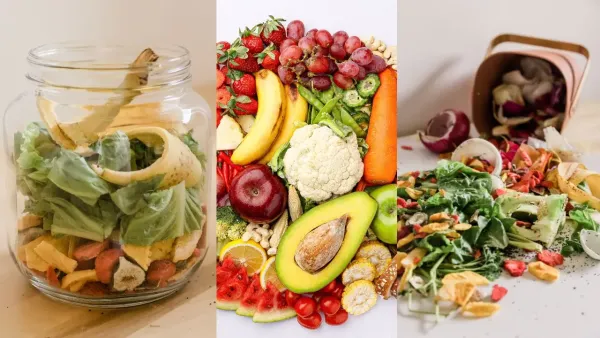
In the field of sustainable eating habits and culinary inquiry, the safety of eating fruit and vegetable peels has drawn a lot of interest.

Peels were traditionally thrown away because of worries about possible stomach problems and pesticide residue. Recent research, however, has clarified the safety and nutritional worth of eating these often disregarded fruit and vegetable pieces.
The advantages and safety concerns of include peels in your diet are covered in detail in this article.
Peels’ Nutritious Value
The many nutrients included in fruit and vegetable peels may have a major positive impact on your general health. They include a lot of dietary fiber, which helps with digestion, controls blood sugar, and encourages feelings of fullness.
Peels also include vitamins and minerals that are important for immune system function, skin health, and disease prevention, including as potassium, vitamin C, vitamin A, and antioxidants.
For example, quercetin, a strong antioxidant that may help decrease inflammation and lessen the risk of chronic illnesses, is found in apple peels.
Citrus peels are also a good addition to your diet since they have greater levels of fiber and vitamin C than the inside meat. Vitamin B6 and fiber, which are vital for metabolism and brain function, are abundant in potato skins.
Safety Issues
Comparing Conventional and Organic The provenance of the product is important when deciding whether or not to eat the peels. Because they are produced without the use of artificial pesticides, organic fruits and vegetables are often a safer choice. Scrubbing and washing food thoroughly might help get rid of pollutants and surface residues if you choose to buy conventionally cultivated produce.
Pesticide Residue: Many people who are thinking about eating peels are concerned about pesticide residue. Peeling eliminates a large amount of nutrients, but it may also lessen exposure to pesticides. Use organic food wherever feasible to reduce your intake of pesticides, or refer to the Environmental Working Group’s annual “Dirty Dozen” list, which identifies the produce that has been tainted with the most pesticides.
Allergies and Sensitivities: Certain fruit and vegetable peels may cause allergies or sensitivities in certain people. It’s best to start eating modest quantities of peel and monitor how your body responds if you have a history of allergies.
Digestion Sensitivity: Although most people benefit from the fiber in peels, some people with sensitive stomachs or digestive disorders like irritable bowel syndrome (IBS) may discover that eating peels makes their symptoms worse. Moderation is crucial in these situations, and a more progressive approach to eating may be more appropriate.
Cleaning and Preparation: To help get rid of dirt, germs, and other impurities from the surface, wash fruits and vegetables thoroughly under running water and with a scrub brush. Whether you want to eat the peel or not, this procedure is crucial.
How to Include Peels in Your Diet
If you’re thinking of eating peels, start out cautiously to see how your body reacts. The following advice can help you successfully integrate peels:
Smoothies: Make tasty, nutrient-dense smoothies by blending fruits like apples, pears, and peaches with their peels.
Roasting: You may preserve important nutrients and improve flavors by roasting vegetables like potatoes, carrots, and beets with their skins on.
Snacks: Thinly sliced fruit peels may be baked into delicious and wholesome fruit chips.
Zest: By zesting citrus peels, you may naturally enhance the flavor of baked items and meals.
Salads: Peels that have been cleaned and thinly sliced may give your salads an added crunch and nutritious boost.
Examining the advantages and safety of eating fruit and vegetable peels has grown in importance as the discussion about sustainable eating habits develops. They are a good complement to a balanced diet because of their nutritional content, even if there are safety concerns to take into account. You may benefit from peels by choosing organic food wherever feasible, cleaning it well, and keeping an eye on how your body reacts. These nutrient-dense peels might become your new favorite culinary secret whether they are blended, roasted, or used to other meals.